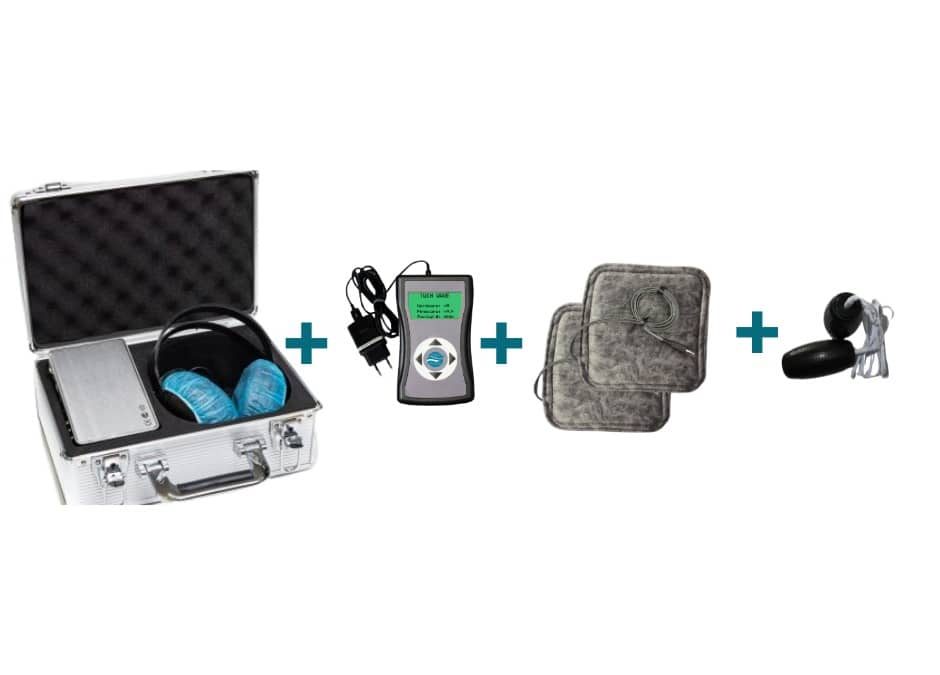
Empowering Couples and Centers with Frequency Healing Tools – Value Package 04
Discover PureHavenSA™ Value Package 04—featuring the Hunter Scanner, Majic Twin Wave Rife Machine, and full detox education. A non-invasive wellness bundle for couples and centers in South Africa.
🔍 What’s Inside Value Package 04?
PureHavenSA™’s Value Package 04 is a comprehensive wellness bundle designed for couples, families, and treatment centres seeking non-invasive frequency-based healing tools. This package is not a medical solution—but it offers a powerful alternative for those exploring holistic health.
Package Includes;
- Hunter Pathogen Scanner A bioresonance device that scans the body using electromagnetic feedback to detect parasites, toxins, and imbalances.
- Bio-resonance Magnetic Frequency Feedback Software Enables real-time analysis and frequency matching for wellness support.
- Full-Day Training & Ongoing Technical Support Learn how to operate your scanner and Rife machine with confidence.
- Printed Manual for Hunter Diagnostic Machine Easy-to-follow guide for setup, scanning, and interpretation.
- Majic Twin Wave Rife Machine for Couples or Centres Dual-channel frequency generator with USB dongle containing 4700 conditions and 150 pre-programmed groups.
- 2 Comfi Patches (20cm x 20cm) High-efficiency applicators for targeted frequency delivery.
- Low-Intensity Silicon Handheld Bars Comfortable and effective for hand-held frequency sessions.
Value Package 04
Package 4 Include:
- Hunter Pathogen Scanner
- PLUS Bio-resonance magnetic frequency feedback software
- Full-day training and ongoing technical support.
- Printed manual for Hunter diagnostic machine.
- Majic TWIN Wave Rife machine with USB dongle containing information.
- 2 Comfi Patches; highly effective 20cm x 20cm applicators for Majic Wave
- Low-intensity silicon handheld bars for Majic Wave
Product images are for illustrative purposes only and may differ from the actual product. Due to differences in monitors, colours of products may also appear different to those shown on the site.
Twin Wave Rife Machine — Healing Together
The Majic Twin Wave Rife Machine is a standout feature of this bundle. It allows two individuals to receive separate treatments simultaneously, or one person to run dual protocols for faster results.
Why Couples Love It
- Dual Mat Compatibility: Required for simultaneous sessions—ideal for emotional bonding and shared detox.
- 4700 Conditions in Database: From parasites to sleep support, hormonal balance to stress relief.
- Customizable Frequencies: Create your own healing groups or use preloaded sets.
As noted by Qi Coil and The Healthy Healing Life, Rife machines use resonant frequencies to interact with the body’s energy fields.
They may help restore balance, reduce stress, and support immune function2.
Why Detox Education Matters
Before using any frequency device, it’s essential to understand how the body eliminates toxins. That’s why we recommend pairing this bundle with our Body Detox Online Course and Cleansing Pathways Course Bundle.
What You’ll Learn
- Digestive System Deep Dive: From oral cavity to colon, understand how food and toxins move through the body.
- Liver & Gallbladder Flush Protocols: Apple cider vinegar, castor oil, and coffee enema techniques.
- Parasite & Worm Education: Learn how they affect your health and how to cleanse safely.
- Hydrotherapy & Enema Guidance: DIY kits and mineral replacement strategies.
- Lifestyle & Diet Planning: 80/20 food plan, leaky gut support, magnesium and moringa benefits.
Body Detox and Cleansing Pathways Online Course Bundle with digestive system modules and parasite protocols;
Who Is This Package For?
- Couples seeking shared healing experiences
- Wellness centres wanting non-invasive tools
- Families interested in parasite cleansing and detox
- Individuals ready to learn and take control of their health
Available across South Africa, including Sol Plaatje, Northern Cape, Cape Town, Durban, and Johannesburg.
Important Notes
- This package is not a medical device and does not diagnose or treat disease.
- Applicators (mats, bars) are not included with standard Rife machines unless specified.
- Product images are for illustrative purposes only and may differ from actual items.
Disclaimer: This blog is for educational purposes only and does not constitute medical advice. Always consult a qualified practitioner before starting any health protocol.


































